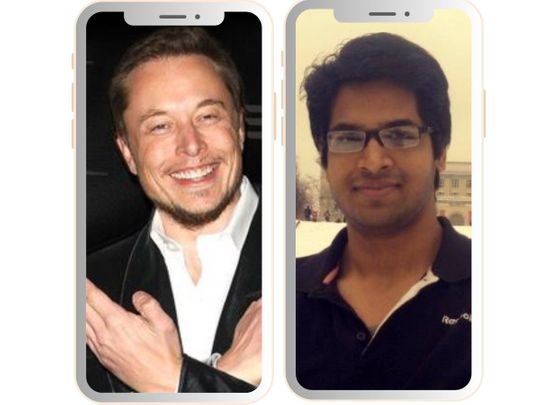
On August 26, 2023, Elon Musk, Tesla's CEO, live-streamed a demo of Version 12 of Tesla's "full self-driving" (FSD) system. He highlighted the role of vision-backed AI and supercomputers in enhancing the system.
Conducted in Palo Alto, the demo showcased Tesla's AI making decisions without relying on code to navigate around obstacles. Musk touted its ability to respond to bicyclists, speed bumps, traffic signals, and pedestrians without delays. The demonstration underlined how Tesla's FSD leverages advanced technology to interpret and respond to various real-world road scenarios accurately.
Training the computer: 'Fleet learning'
The FSD's "knowledge" stems from training its "neural network" system. Over 400,000 US and Canadian Teslas, equipped with 8 cameras each, amassed 250 million miles of visual data by June 2023. Processing this into actionable information demands a 10,000+ GPU cluster for swift computation.
Musk revealed the AI directing the car's actions is now purely camera-trained, controlling steering and braking. He expects continuous enhancement in future iterations. He remarked, "It basically reads in silence without being told to read."
Who is Ashok Elluswamy?
On this demo, the man sitting next to Musk is Ashok Elluswamy, Tesla’s Director of Autopilot.
"This end to end neural network approach will result in the safest, the most competent, the most comfortable, the most efficient, and overall, the best self-driving system ever produced. It’s going to be very hard to beat it with anything else!” Elluswamy later claimed on X.
Career software engineer
Elluswamy's software engineering career started in Chennai, India. He was also a top student at America’s Carnegie Mellon University, where he worked on a project titled “Semi-Autonomous Navigation for an Explosive Ordnance Disposal Robot”.

Today, Elluwamy is the top man of Tesla’s autopilot, even considered as one of Musk’s possible replacements. His experience ranges from computer vision and perception through planning and control.
On his LinkedIn profile, Elluswamy states that he is “inspired to solve meaningful and challenging real-world problems using state-of-the-art technology… eager to work hard and learn continuously.”
What's true with humans — continuous learning — is even more valuable with a complex, vision-driven (instead of LIDAR or radar-controlled) autopilot system.
They are designed to recognise patterns, process complex data, and make predictions based on the data they are trained on.
Neural networks have gained significant popularity in various fields due to their ability to tackle tasks that involve large amounts of data and complex relationships.
Focus on self-driving AI
Elluswamy has a razor-sharp focus on Autopilot and making full self-driving tech work. Even using the world's fastest computers, it's a tough nut to crack.
He is a nine-year Tesla veteran, having joined as a software engineer for autopilot in June 2014, a post he held for 2-1/2 years before rising from the ranks.
After moving into a senior software engineer (autopilot) position, he was promoted director of the Tesla Autopilot Software in May 2019, a position he holds up to present.
The main focus areas of Elluswamy’s autonomy software team:
- Creation of large-scale automatic ground truth pipelines to train neural networks with massive amounts of diverse, high-quality data.
- Use this “fleet-learning” approach to replace potentially brittle run-time algorithms with robust learned models.
- Developing an accurate and detailed geometric and semantic understanding of the world using the best of both machine-learned and engineered models.
- Building robust, causal, predictive models for other agents in both geometry and semantic state spaces.
- Decision making, motion planning, and control modules using state-of-the-art AI techniques including methods for high-dimensional search, trajectory optimisation, reinforcement learning, model-predictive control, etc.
Volkswagen stint
Before joining Tesla, he interned at Volkswagen Electronic Research Lab, contributing to robust camera-based perception systems that recognize roadmarks for precise vehicle localization.

He also worked more than 2 years as a software engineer with WABCO Vehicle Control System, base din Chennai, India.
Self-driving AI is a "Holy Grail" challenge due to complex factors — unpredictable environments, real-time decision making, complex perception, diverse road infrastructure, extreme and so-called “edge case” situations, safety concerns, regulations and liability, hacking, ethical decisions. There's also the matter of public perception.
The autonomous driving industry is just getting started.
Who will crack it with a 100 per cent, no-human-intervention-needed kind of reliability? It's still anyone’s guess. Tesla has come a long way. During the 45-minute video demo, Musk said it was a generally "smooth" drive, though he admitted having to "intervene" once.
Most automakers — in the West and Asia — are pouring millions of dollars into the development of AI to overcome this challenge.
Musk, Elluswamy “failed” to deliver
And not everyone is impressed. Some, like @Factschaser, a self-professed “Tesla owner exposing issues”, claimed Tesla’s FSD is all hype.
“Musk is the boy who cried full self driving one too many times and has lost ALL credibility. Either he is a con artist or, charitably speaking, the world’s worst project manager for disregarding sound design practices/underestimating the effort/complexity and failing to deliver.”
At least two of the “Big Three” automakers in the US (Ford and General Motors) announced their adoption of the NACS (North American Charging Standard), a format popularised by Telsa.
Following Ford and GM's move, EV startup Rivian announced Tesla NACS adoption too, before Volvo and Mercedes Benz followed in the US automaker's footsteps.
Volkswagen is also reported in discussions to adopt NACS, while Japanese automakers Nissan and Honda had already confirmed their move towards NACS.
Software is key — and a major cause of frustration
Given the natural drive towards EV industry hardware standardisation, which helps economies of scale (and presumably lead to cost reductions), software remains the biggest hurdle. Musk had earlier floated the idea of eventually licensing their FSD system to other carmakers, potentially making it a global standard, and a money-spinner.
This demonstrates the high stakes involved in the AI sphere. In our collective AI-driven future, it’s not the hardware or the fuel/battery pack that counts.
Rather, it's the spaghetti of codes, or in Tesla's case, the high-stakes neural network "training" — the software — whose mastery of unpredictable road conditions will be constantly scrutinised.
Elluswamy and his team of engineers may just hold the key to cracking it.








